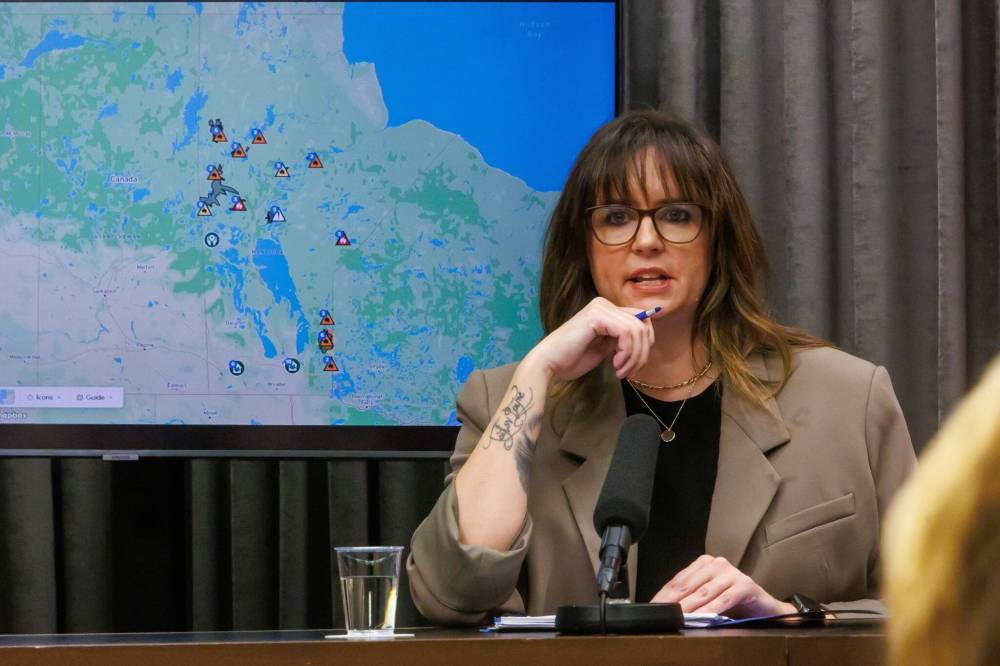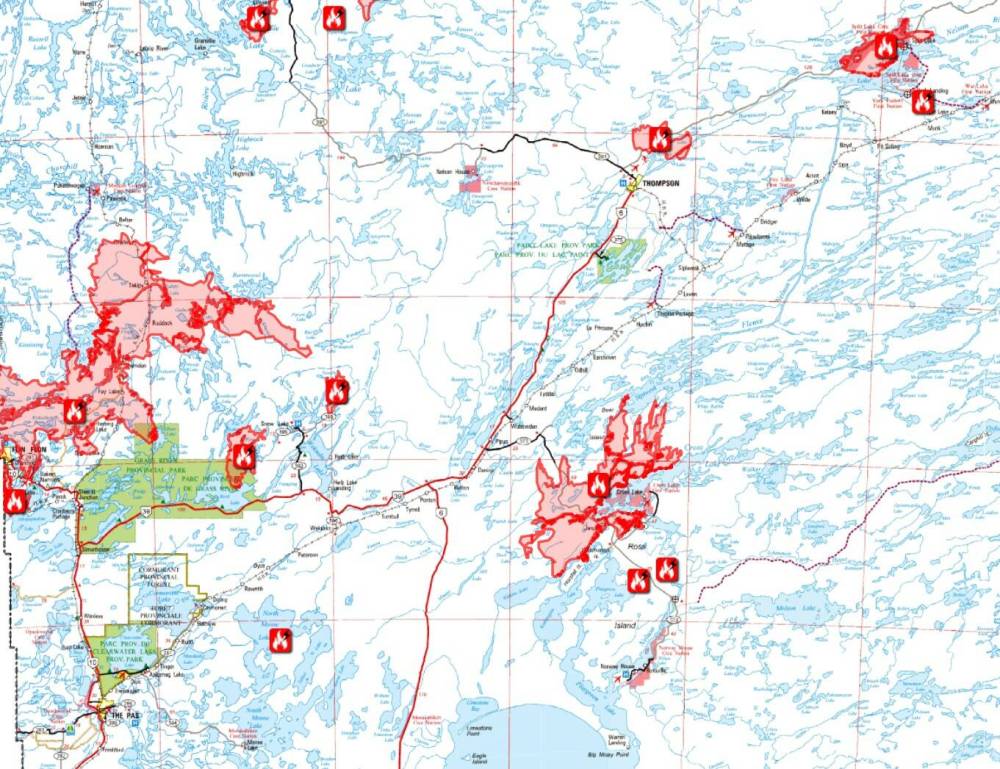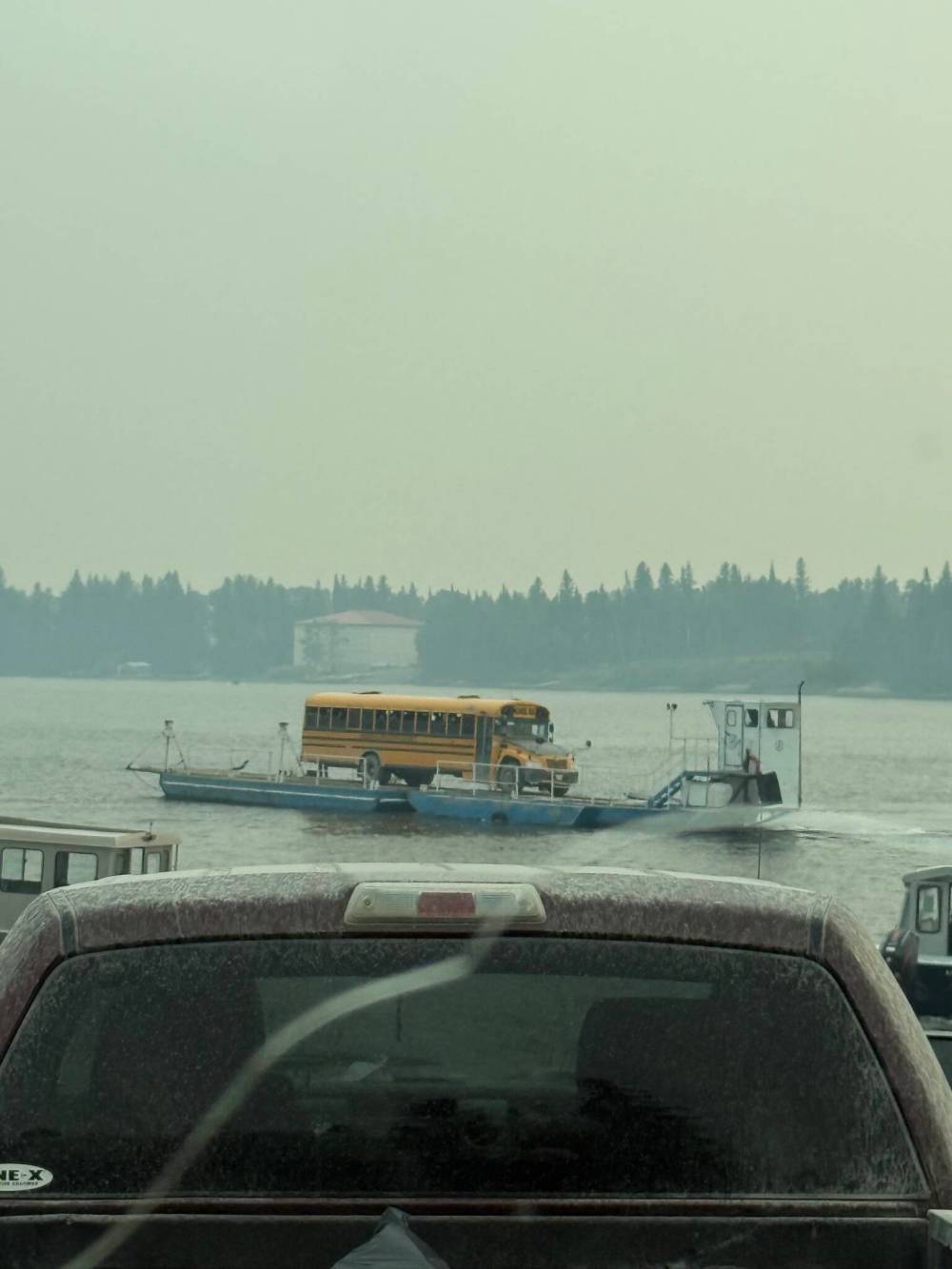Province ‘quite confident’ about measures to protect Thompson from wildfire
Advertisement
Read this article for free:
or
Already have an account? Log in here »
To continue reading, please subscribe:
Monthly Digital Subscription
$0 for the first 4 weeks*
- Enjoy unlimited reading on winnipegfreepress.com
- Read the E-Edition, our digital replica newspaper
- Access News Break, our award-winning app
- Play interactive puzzles
*No charge for 4 weeks then price increases to the regular rate of $19.00 plus GST every four weeks. Offer available to new and qualified returning subscribers only. Cancel any time.
Monthly Digital Subscription
$4.75/week*
- Enjoy unlimited reading on winnipegfreepress.com
- Read the E-Edition, our digital replica newspaper
- Access News Break, our award-winning app
- Play interactive puzzles
*Billed as $19 plus GST every four weeks. Cancel any time.
To continue reading, please subscribe:
Add Free Press access to your Brandon Sun subscription for only an additional
$1 for the first 4 weeks*
*Your next subscription payment will increase by $1.00 and you will be charged $16.99 plus GST for four weeks. After four weeks, your payment will increase to $23.99 plus GST every four weeks.
Read unlimited articles for free today:
or
Already have an account? Log in here »
Manitoba officials say they’re confident Thompson will be spared from a nearby wildfire that forced the municipal government to put residents on notice to evacuate late last week.
“We’ve had some pretty decent weather to assist us in the firefighting effort. So, we’re quite confident in the protections that we’ve put in place between the fire and the city of Thompson,” said Kristin Hayward, assistant deputy minister of the Manitoba Wildfire Service, at a news conference Monday.
Cooler temperatures have assisted in the fight against the fire, which has consumed 163,000 hectares.

MIKE DEAL / FREE PRESS FILES
Kristin Hayward, assistant deputy minister of the Manitoba Wildfire Service, said officials are confident in their wildfire protection efforts inThompson.
On Friday, Thompson’s 13,000 residents were asked to fill out pre-evacuation forms just in case. The city has said an evacuation would be called if the nearby fire cuts off Highway 6, the vital link to the south.
As of Monday, nearly 11,000 people completed the form, the city said to social media.
Firefighters from Mexico who arrived in Thompson Monday will start working the fire after a briefing this evening, the update said.
Sprinklers are being set up outside homes and vegetation control is underway in and around the city that’s a hub for the north.
The forecast calls for moderate temperatures over the next few days. Winds are expected to be moderate to strong from the northwest.
Residents in Thompson are preparing to leave should they get the order to leave the community, which is located about 763 kilometres north of Winnipeg.
Tammy-Lee Humby has had her bags packed since early June when wildfires began forcing the evacuation of multiple communities such as Lynn Lake and Flin Flon.
She said that with a daughter who is non-verbal and has cerebral palsy, she must always be ready with her medication and other supplies.
“I can’t risk having to go to a shelter with a severely disabled, medically fragile child. So we have made plans to go to Alberta to a friend’s house that is completely wheelchair accessible,” she said.
Humby works for the Northern Regional Health Authority in cancer navigation services and can’t leave before an order is issued, but said she doesn’t feel like her family or home is in immediate danger.
“It’s cool here today with a little wind, but not smoky at all in town,” she said. “The town has been very good on providing updates.”
Christine Stevens, assistant deputy minister of the Manitoba Emergency Management Organization, said if Thompson residents were ordered out of the town, most would come to Winnipeg before moving to other communities.
On Monday, 12,000 Manitoba residents were evacuated from eight communities because of wildfires. More than 6,000 were being housed in more than 2,100 Manitoba hotel rooms, while about 1,300 were staying in Ontario hotel rooms.

At the two Winnipeg evacuation centres, 653 beds were in use at the Leila Avenue site as of Sunday, while about 450 were in use at the University of Winnipeg.
Sites at Billy Mosienko and Eric Coy arenas, the Portage la Prairie curling rink, downtown convention centre and the Red River Exhibition grounds are on standby if more space is needed.
The province has, in total, room for more than 7,000 evacuees at shelters, Stevens said.
Manitoba declared its second state of emergency of the wildfire season on Thursday.
As of Monday, there were 122 active wildfires.
Nearly 250 people from outside Manitoba are helping fight the wildfires, including more than 200 from Mexico. More crews from New Zealand and Australia were expected to arrive Monday.
As of Monday afternoon, the Canadian Armed Forces said it had evacuated more than 1,570 residents from Garden Hill Anisininew Nation on CC-130 Hercules transport airplanes.
The 2,800-hectare blaze burning near the community is out of control; it prompted the mandatory evacuation of the fly-in community’s 4,000 residents on Wednesday. The community is about 600 kilometres northeast of Winnipeg.
Alex McDougall, interim grand chief of Anisininew Okimawin, which represents four Island Lake First Nations including Garden Hill, was told late Monday that Stevenson Island, another community in the region, may have to evacuate.
McDougall explained the region’s airport is on the island and is the only airstrip big enough to accommodate the Hercules.
“So there’s this fear and concern that we may not have access to that facility if the community is evacuated, plus that’s where the personnel are being housed,” he said.
The next available airport would be in St. Theresa Point, which currently has smaller aircraft evacuating residents, but McDougall said time is of the essence.
There’s upwards of 1,000 priority residents left in St. Theresa Point and Wasagamack to be evacuated, the grand chief said.
Nisichawayasihk Cree Nation (Nelson House) began a partial evacuation on Friday. People with serious medical conditions were moved out of the community.

Sophia Harper photo
Garden Hill First Nation residents had to use a ferry to get to the mainland before being evacuated to Winnipeg by Hercules aircraft after a mandatory evacuation order was issued Friday due to wildfire smoke.
Up to 160 similar high-priority residents from Pimicikamak Cree Nation have been moved to hotels in Winnipeg and Brandon since last weekend, Chief David Monias said at the time.
The community, which was fully evacuated in June, has been shrouded in heavy smoke. Provincial Road 373, the only surface link in and out, has had intermittent closures.
Much of Central Canada and Manitoba were placed under special air quality statements or warnings early Monday morning amid smoke from wildfires, as Environment Canada advised residents to limit time outdoors and watch for smoke exposure symptoms.
The weather agency has also issued a special air quality statement for much of Manitoba, noting that air quality and visibility due to wildfire smoke can fluctuate over short distances and vary from hour to hour.
In a social media post, the town of Snow Lake, which has been under an evacuation order since Friday, said temperatures, wind, and humidity were all favourable on Sunday and 10 mm of rain had fallen.
As of Monday afternoon the fire had not grown, the update said. The province’s fire map shows the blaze is considered out of control and has burned 17,353 hectares.
In Lynn Lake, the town posted an update Monday afternoon saying a 13,000-hectare blaze burning near the community currently poses no threat to the town.
Lynn Lake’s 600 residents have been evacuated twice since late May.
— with files from The Canadian Press
nicole.buffie@freepress.mb.ca

Nicole Buffie
Multimedia producer
Nicole Buffie is a reporter for the Free Press city desk. Born and bred in Winnipeg, Nicole graduated from Red River College’s Creative Communications program in 2020 and worked as a reporter throughout Manitoba before joining the Free Press newsroom as a multimedia producer in 2023. Read more about Nicole.
Every piece of reporting Nicole produces is reviewed by an editing team before it is posted online or published in print — part of the Free Press‘s tradition, since 1872, of producing reliable independent journalism. Read more about Free Press’s history and mandate, and learn how our newsroom operates.
Our newsroom depends on a growing audience of readers to power our journalism. If you are not a paid reader, please consider becoming a subscriber.
Our newsroom depends on its audience of readers to power our journalism. Thank you for your support.
History
Updated on Monday, July 14, 2025 6:22 PM CDT: Adds photos, details











